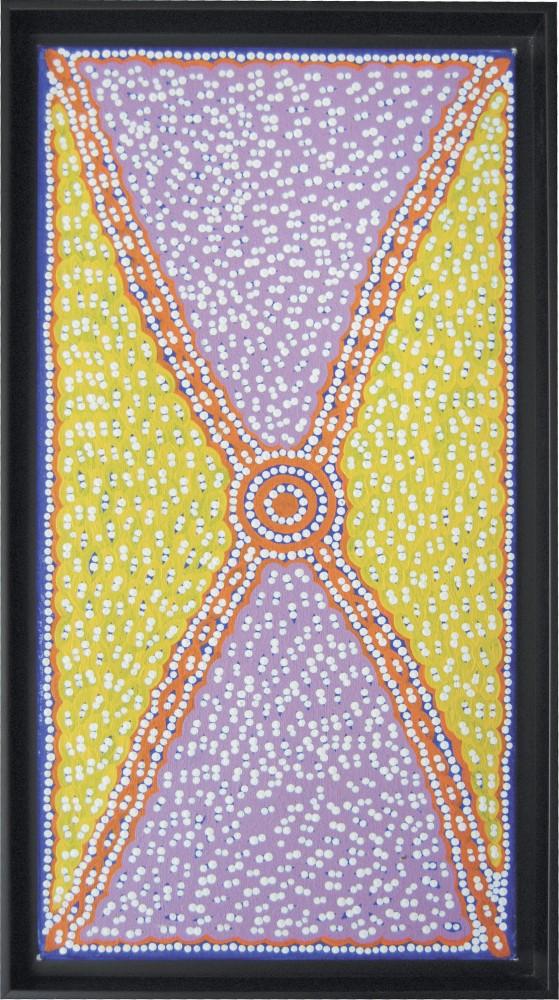Once Upon a Dream

GVL/ Rane Martin Australian Aboriginal paintings are currently on display in the Faculty/Staff Dining Room in the Kirkhof Center. These paintings were created as part of the ceremonies celebrating Tjukurrpa or Dreamtime. Artist: Kristen Nungarrayi Kitson Title: Ngurlu Tjukurrpa (Native Seed Dreaming)
Sep 1, 2011
The display showcases a number of pieces from Grand Valley State University’s Australian Aboriginal art collection, “Jukurrpa: Aboriginal Dream Paintings,” including several paintings on canvas and one painted on a slab of bark, all painted by Aborigine people.
The Warlpiri Aboriginal people of the Northern Territory of Australia use the concept of dreaming in their art and in their culture, as it is ingrained in everyday life and present in many forms of communication.
“Dreaming to the Aboriginals means storytelling,” said Henry Matthews, director of Galleries and Collections at GVSU. “It’s a way of communicating stories.”
The works are made up of many different characters and symbols that represent things familiar to the artists’ communities, such as land, animals, ceremonies and people. Next to the exhibit is a plaque that translates some of the more frequently used symbols.
“Many of these stories are sacred and their deeper meanings are understood only within the Warlpiri peoples,” said Paris Tennenhouse, GVSU Art Gallery exhibit designer. “However, there is ample room for interpretation of symbols used by artists as means of communicating an outside story to non-indigenous people.”
Dreaming for the Warlpiri people is different from the traditional American concept of dreaming. Instead of impossible fairy tales or adventures, the Warlpiri communicate about life in the outback, Matthews said.
“Many of the artists who painted these works actually live in the outback,” he said. “This makes them very connected to the earth and nature – connected in a way we just can’t conceive.”
One major theme in their communication and art is walking. Matthews said since a Warlpiri person can walk thousands of miles in a lifetime, it resonates in their stories.
Time is also present in the culture and the art as another difference between the Warlpiri and American cultures.
“The work involves the past, present and future,” Tennenhouse said. “There is no distinction between the spiritual and the material or the natural and the supernatural. Time is not linear, but circular.”
All of the paintings on display come from artists from the Warlukurlangu Artists Aboriginal Corporation, a community center in the Northern Territory of Australia that focuses on representing local artists. In the 70’s these centers started to appear because of artists’ fear of exploitation and misrepresentation.
These centers help ensure the artists interests are best met and the money gained from selling art comes back to the community, Tennenhouse said.
Warlukurlangu means fire in the Warlpiri language, and also has a relationship to dreaming. This center is owned and operated by its more than 600 members.
Both Matthews and Tennenhouse have visited Australia and purchased art there. This particular collection was purchased from the University of Virginia’s Kluge-Ruhe Museum, the only museum in the United States dedicated solely to Australian Aboriginal art.
The exhibit is free and open to the public until December 9.






















